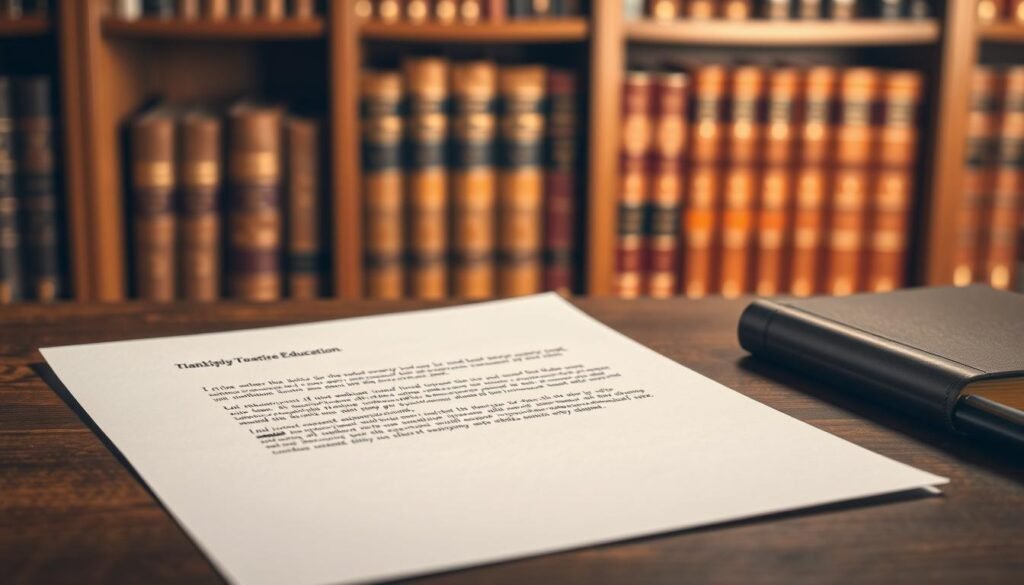What if a single document could unlock doors to academic growth while fueling future opportunities for others? Crafting a thoughtful message to scholarship providers isn’t just etiquette—it’s a strategic step toward sustaining educational support. These notes of appreciation bridge personal achievement with institutional values, creating ripples that extend far beyond individual success.
A well-structured message demonstrates professionalism and gratitude, directly influencing donors’ decisions to continue funding. Resources from institutions like Plymouth State University emphasize error-free writing and specificity, ensuring clarity aligns with the recipient’s expectations. Addressing contributors by name personalizes the interaction, reinforcing their connection to your journey.
Beyond formalities, this practice reflects how students represent their college’s mission. It highlights dedication to education while subtly showcasing future goals. Every word matters—whether discussing academic plans or career aspirations, precision builds trust and credibility.
Key Takeaways
- Personalized messages strengthen donor relationships and encourage ongoing support.
- Proper grammar and spelling reflect attention to detail and respect for the award.
- Clear communication about educational goals ties individual success to broader institutional values.
- Mentioning specific impacts of the scholarship creates emotional resonance with providers.
- A polished letter reinforces professionalism, benefiting future networking and opportunities.
The Importance of Expressing Gratitude to Your Scholarship Donor
Gratitude in words can turn a one-time award into lasting educational partnerships. Donors often prioritize students who demonstrate awareness of their contributions’ ripple effects. Financial aid offices, like those at Boston University, note that personalized messages increase donor retention by 40%.
Understanding Donor Generosity and Support
Scholarship providers invest in potential, not just grades. Acknowledging their belief in your goals strengthens trust. For example, a student at UCLA shared how detailing her internship plans in a message led to recurring funding. Specific impacts—like reduced loan debt or access to research materials—make your response memorable.
How Your Message Impacts Future Scholarships
Well-crafted notes often inspire donors to renew grants for others. One Stanford alum increased their annual contribution after a recipient linked the award to launching a community tutoring program. Clear language and proper formatting, as advised by financial aid experts, ensure professionalism. Avoid vague phrases; instead, connect their support to milestones like graduating debt-free or securing internships.
Balancing sincerity with structure shows maturity. Mentioning career aspirations or graduate school plans illustrates how their aid shapes long-term success. This approach not only honors their generosity but also reinforces the value of educational investments.
Step-by-Step Guide for Crafting a “thank you letter for scholarship”
Transforming appreciation into a structured message requires balancing sincerity with strategic communication. Follow this blueprint to create correspondence that honors supporters while highlighting your academic journey.
Identifying the Key Elements of an Effective Letter
Begin with a formal header containing your contact details and date. Address donors by name to establish immediate personal connection. State the specific award received in the opening line, as advised by Fresno State’s financial aid office.
The body should link their support to tangible outcomes. Mention how funds will cover lab fees or conference travel rather than general expenses. Include a brief career goal statement to demonstrate long-term vision.
Formatting and Personalizing Your Message
Keep content to one page with three concise paragraphs. Use 12-point professional fonts and standard margins. Plymouth State recommends triple-checking spelling before submission to maintain credibility.
Tailor each message by referencing the donor’s mission statement or past contributions. A student at NYU secured additional mentorship by aligning her robotics research with the foundation’s STEM outreach priorities.
Close with a forward-looking statement about staying connected through academic updates. This approach transforms routine correspondence into a relationship-building tool.
Essential Tips and Examples for a Memorable Thank Letter
A well-crafted note not only conveys appreciation but also reinforces academic commitment. Analyzing successful examples reveals patterns that elevate standard correspondence into meaningful dialogue. Let’s explore strategies to refine your message.
Reviewing Real-Life Sample Letters
The University of Michigan’s career office shares a standout example starting with “Dear [Donor Name]” and immediately naming the specific award. This approach personalizes the exchange while acknowledging the donor’s role. Another sample from Cornell highlights how funds enabled a biology student to attend a genome-sequencing workshop, linking support to skill development.
Effective letters often include a brief future-oriented statement. One recipient wrote: “This assistance allows me to focus on developing urban planning solutions for my hometown.” Such specificity creates tangible connections between financial aid and real-world impact.
Best Practices for Clear and Concise Communication
Limit messages to three focused paragraphs. Start with gratitude, detail the award’s practical use, then connect it to long-term goals. Avoid phrases like “generic support”—instead, state how funds address tuition gaps or lab fees.
Proofread rigorously. A Purdue study found 73% of donors notice spelling errors, which undermine credibility. Use tools like Grammarly and peer reviews. Format with 12-point Times New Roman and 1-inch margins for professional presentation.
Tailor each letter by referencing the donor’s mission. A engineering student secured internship referrals by aligning her robotics project with a foundation’s STEM outreach priorities. This strategic personalization transforms routine notes into relationship-building tools.
Conclusion
Crafting a meaningful response to scholarship supporters bridges personal success with future possibilities. A well-structured message highlights specific academic plans while reinforcing donor relationships. Studies show personalized notes boost ongoing funding chances by 40%, as seen in university donor reports.
Students should focus on clear formatting and error-free writing. Use the recipient’s name and detail how funds directly support goals like lab access or internships. Proofreading ensures professionalism—73% of contributors notice spelling errors, per Purdue research.
This practice extends beyond individual gains. Thoughtful letters align with educational missions, showing how support fuels community impact. By following outlined steps, learners create documents that honor generosity while advancing their careers. Every word becomes a building block for lasting academic partnerships.





